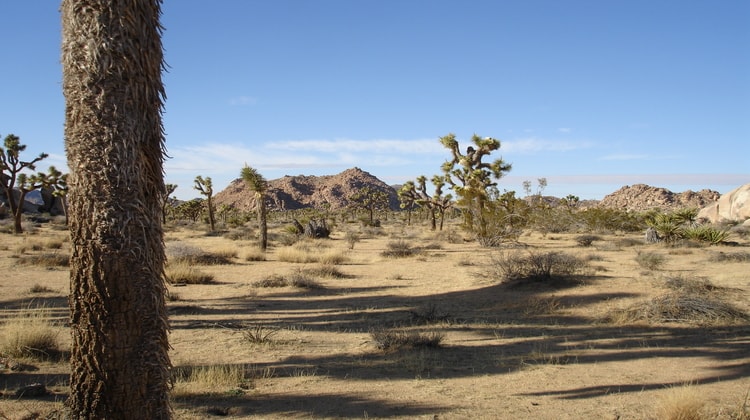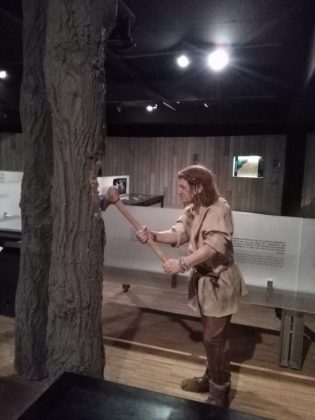During my trip to San Diego, I also visited the nearby Joshua Tree Park (read here more about my San Diego trip). The nature in this park is, as expected, fenomenal. But beside the Joshua Trees, you can also find some pieces of history here. In this article I will tell you about one of them: the Indian petroglyphs.

The pictures that you see in this article are the ones I took myself in the National Joshua Tree Park (USA – California). They depict several kinds of symbols. It was the first time ever I saw petroglyphs and afterwards I looked up some information to share with you. It’s this history that I want to share with you, because if you read this article now, you are probably also curious for what petroglyphs actually are.
The Indian petroglyphs in Joshua Tree Park (USA)
If you follow a small walking trail in Joshua Tree Park, you eventually end up at the Indian petroglyphs. The trail is not hard and doesn’t take long. So you have no excuse of not having a look at the rock carvings. It’s worth it!
You can see some examples of the Indian petroglyphs on my picture below:

As a European, I already saw some cave drawings. But I must admit, these petroglyphs have a more mystique aura around them. Probably because of the location, the way they are created (it’s much harder to make a petroglyph in a rock than a drawing on a cave wall) and the depictions itself.
The carvings are often coloured. This was done with ochre, but also with berries or other plants.
But what is a petroglyph?
I already mentioned that petroglyphs are rock carvings. But what are petroglyphs exactly? Well, it’s picture carved into a rock. So it’s not a drawing. Our ancestors carved there pictures and symbols into the hard rocks.
This fact gives even more value to the petroglyphs, because it took much more effort to make them.
Like cave drawings, the petroglyphs depict animals and humans. But also more creative and mystique subjects like a human with animal characteristics. It’s possible that during the creation of these more creative carvings, the creator was in a trance.
Petroglyphs are made by …
The carvings are made hundreds and even thousands of years ago. A lot of the examples that are found can be dated back to prehistoric times.
Petroglyphs are made by our ancestors. So in the USA (like the ones I visited in the Joshua Tree Park), they are made by Indian tribes or other forms of tribes. They did not have a written language or advanced spoken language, so they used the petroglyphs as a kind of communication. That’s why the symbols and pictures are also used within one tribe, and not necessarily as a form of communication between different tribes.
The tribes that made petroglyphs were nomadic and moved around in search of food and water. That is why you can find the carvings close to water or other places the nomadic tribes camped.

Where were petroglyphs made?
A fact that always surprises me is that, like with the pyramids, there is some kind of instinct within humans that makes them communicate in the same way. And this without being in contact with each other.
Like you find pyramid shaped buildings in Egypt and South-America (read here more about my trip to Egypt), you can also find petroglyphs in North-America, Scandinavia and even Australia. So in some ways you can surely see this as a proof that humankind is, deep within, all the same.
The meaning of petroglyphs
The meaning of petroglyphs is not that easy to discover, and we will probably never know the true meaning of every symbol. But we can be sure that they have a meaning. Like I said, it cost the creator a lot of effort to make the carvings in the hard rocks. And you would never do so much effort if it was without meaning.
One of the explanations is that they are religious. Especially when the subject is unreal, like the animal-human figures. Religious symbols are mostly used to ask something of the gods, like prosper times or protection. They can also be something cultural, to mark or depict something that happened on this place and is important for the tribe. Or they are relevant and useful markings, for example for water sources.
Conclusion: petroglyphs
I like petroglyphs, and also other kinds of prehistoric relics, because they are the most direct link to our ancestors that lived thousands of years ago in prehistoric times. They didn’t leave us much, but we have this. It fascinating to see how they survived all these years: mind blowing that a prehistoric person made these and was standing at the same spot I was. It made me feel very tiny.
Source:
Pictures: History Rob
Wikipedia
National Park Service





